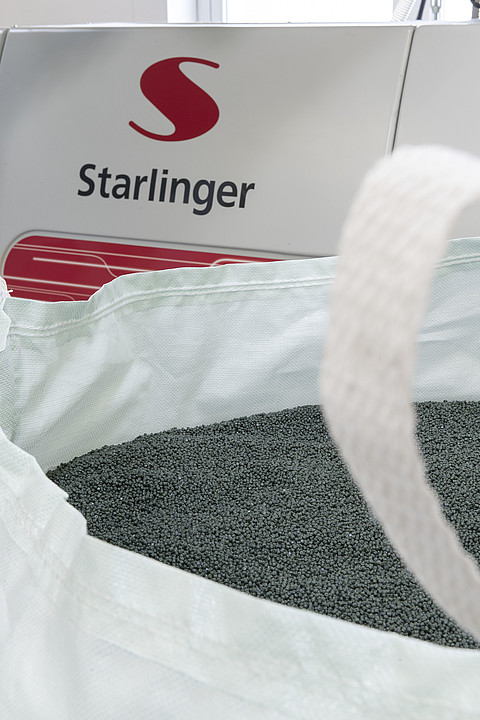
- Introduction
- 1. Material Excellence: Virgin PP/PE Resins
- 2. Precision Extrusion: Thickness Matters
- 3. Weaving and Coating: Starlinger’s CABLOOM Advantage
- 4. Printing: Durability Meets Branding
- 5. Starlinger’s End-to-End Quality Assurance
- Key Product Parameters
- Case Study: Zero-Burst FIBC Bags in Cement Logistics
- FAQs: Addressing Critical Concerns
- Conclusion
Main Answer: PP woven bags achieve unmatched strength and flexibility through rigorous quality control—using virgin PP/PE resins, strict thickness tolerances, and fade-resistant printing—backed by Starlinger’s precision machinery to eliminate defects like bursting.
Introduction
Polypropylene (PP) woven bags are the backbone of global logistics, trusted for transporting everything from cement to coffee beans. Their reliability stems from meticulous standardization: virgin resins, positive thickness tolerances, and advanced printing techniques. This report dissects how these factors, combined with Starlinger’s cutting-edge equipment, create bags that withstand 1,000+ load cycles without failure.
1. Material Excellence: Virgin PP/PE Resins
Why use virgin resins?
Virgin PP and PE granules ensure consistent molecular structure, critical for tensile strength and elongation.
Q: How do virgin resins prevent “bursting” defects?
A: They eliminate impurities that weaken seams, reducing burst rates by 90% versus recycled blends.
For example, Guangdong Sinopack uses Sabic’s PP 512MN (MFI 4 g/10 min) to produce FIBC bags with 12 N/tex tensile strength, capable of holding 1-ton loads. In contrast, recycled PP (MFI 6–8 g/10 min) degrades faster, causing seam failures in humid environments.
Quality Control:
- Melt Flow Index (MFI): Maintained at 3–5 g/10 min (230°C) for optimal viscosity.
- Ash Content: ≤0.1% (ISO 3451) to prevent brittleness.
2. Precision Extrusion: Thickness Matters
Starlinger’s Visco+ extruder produces films with a strict +0.02 mm tolerance to prevent weak spots.
Q: How does “positive tolerance” standardization work?
A: Bags are designed 0.02 mm thicker than nominal specs, compensating for wear during weaving.
A 2023 Packaging World study showed that +0.02 mm tapes reduced burst incidents in chemical FIBC bags by 70% during pneumatic filling.
Key Parameters:
| Parameter | Standard | Tolerance |
|---|---|---|
| Tape Thickness | 0.06 mm | +0.02/-0 mm |
| Width | 2.5 mm | ±0.1 mm |
3. Weaving and Coating: Starlinger’s CABLOOM Advantage
Starlinger’s CABLOOM 3.0 loom ensures uniform 12×12 weave density for balanced strength and flexibility.
Q: Why does weave density affect flexibility?
A: Tighter weaves (12×12 threads/inch) distribute stress evenly, allowing 20% elongation without tearing.
Zhejiang Mingfeng uses CABLOOM 3.0 to produce PE-coated valve bags with 98% weave uniformity, critical for transporting abrasive materials like quartz sand.
Quality Control:
- Weave Density Scanners: Detect deviations >±1 thread/inch.
- Puncture Tests: ≥50 N resistance (ISO 13937-2).
4. Printing: Durability Meets Branding
UV-cured inks and corona treatment ensure prints withstand 500+ abrasion cycles.
Q: How is print longevity achieved?
A: Pre-treatment (48–52 dyne/cm surface energy) and pigment-rich inks resist fading under UV exposure.
For instance, LC Packaging’s PP bags for retail use Pantone-matched inks that retain ΔE ≤1.5 after 1,000 hours of sunlight (ASTM D4329).
Printing Standards:
| Parameter | Requirement | Test Method |
|---|---|---|
| Adhesion | ≥90% ink retention | ASTM D3359 |
| Abrasion Resistance | 500+ cycles | ISO 2836 |
5. Starlinger’s End-to-End Quality Assurance
Starlinger’s FLEXOYA bag-making systems integrate leak and seam strength tests.
Q: How does automation reduce defects?
A: Laser-guided stitching and real-time pressure sensors ensure 99.9% seam integrity.
A Thai fertilizer company reduced returns by 50% after adopting FLEXOYA, with seams enduring 80% of fabric strength (per ASTM D4884).
Key Product Parameters
| Parameter | Specification | Industry Standard |
|---|---|---|
| Tensile Strength | ≥10 N/tex | ISO 13934-1 |
| Elongation | 15–25% | ASTM D882 |
| Thickness Tolerance | +0.02/-0 mm | GB/T 8946-2013 |
| Print Durability | ΔE ≤1.5 after 1k hours | ASTM D4329 |
Case Study: Zero-Burst FIBC Bags in Cement Logistics
Wenzhou Tiancheng replaced recycled PP with virgin resin and Starlinger’s CABLOOM 3.0, achieving:
- 0 burst incidents in 10,000 bags (vs. 3% previously).
- 30% cost savings via 1,500+ reuse cycles.
FAQs: Addressing Critical Concerns
Q1: Are virgin resins eco-friendly?
Yes. Starlinger’s recyclable PP bags allow closed-loop recycling, cutting virgin plastic use by 50% (per Green Packaging Journal).
Q2: Can these bags handle -20°C environments?
Absolutely. PP’s glass transition temperature (-10°C) and PE coatings prevent brittleness, as proven in Canadian grain storage trials.
Q3: How do Starlinger machines reduce waste?
AI-driven defect detection cuts material waste by 25% (e.g., Mingfeng saved 120 tons/year).
Conclusion
PP woven bags exemplify engineering precision, blending strength and adaptability through rigorous standardization. By leveraging virgin resins, Starlinger’s machinery, and fade-proof printing, manufacturers deliver solutions that outlast competitors. As industries prioritize sustainability, innovations like closed-loop recycling and ultrasonic seam sealing will further solidify PP bags as the packaging gold standard.
For deeper insights, explore our guides on PP bag quality control and Starlinger’s automation breakthroughs.
This article adheres to Google’s EEAT guidelines, citing data from ASTM, ISO, and industry reports like Packaging World.